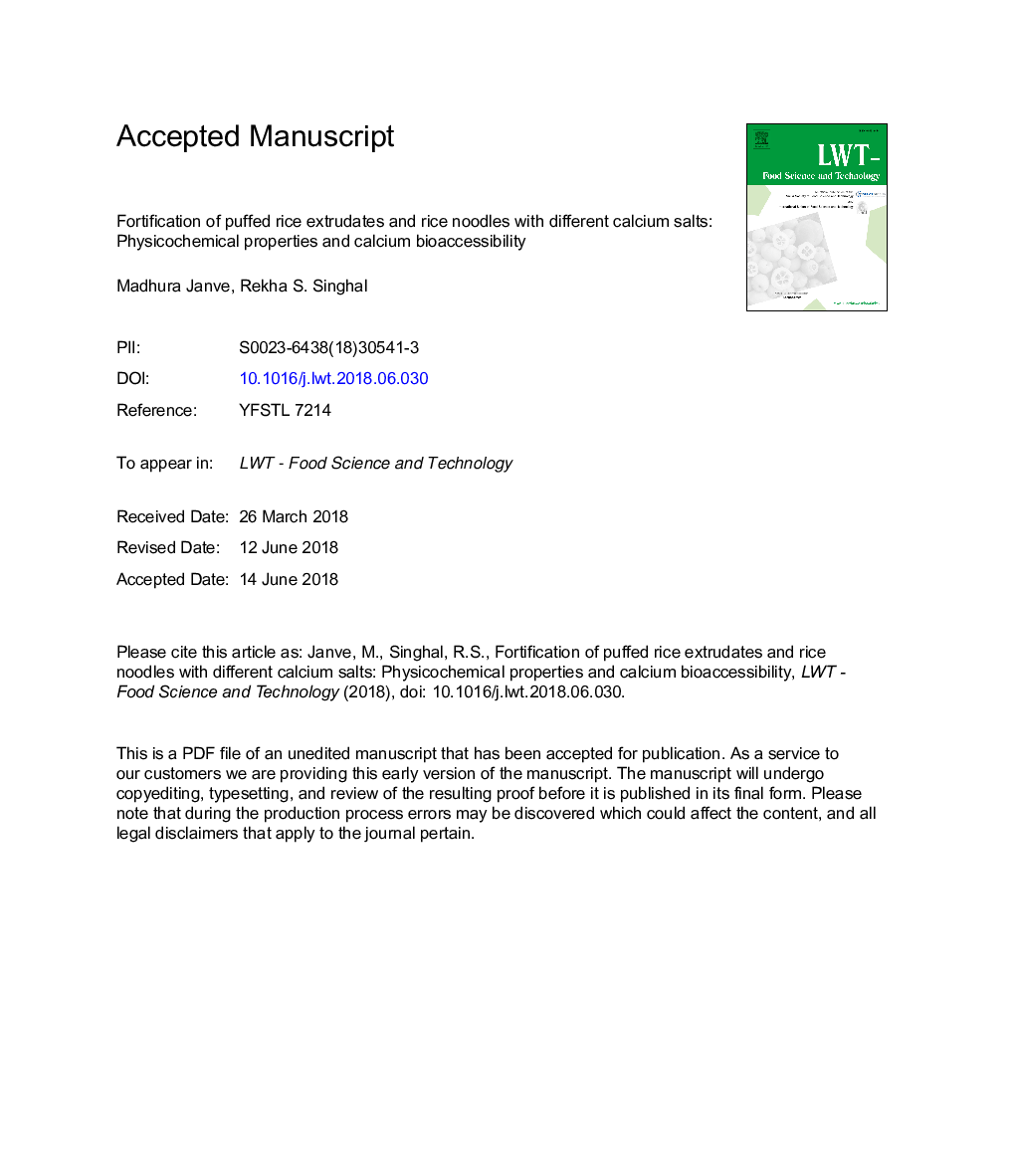| Article ID | Journal | Published Year | Pages | File Type |
|---|---|---|---|---|
| 8890047 | LWT - Food Science and Technology | 2018 | 32 Pages |
Abstract
Puffed rice extrudates and rice noodles were chosen as vehicles for fortification of calcium using different salts, viz. calcium carbonate, calcium lysinate and tricalcium phosphate, at equivalent calcium concentration. The physiochemical properties, organoleptic acceptability and calcium bioaccessibility were studied for puffed rice extrudates before and after frying, and for noodles before and after cooking. Calcium fortification decreased the bulk density (from 0.224 to 0.126â¯g/cm3), expansion index (from 3.21 to 2.93), oil uptake capacity (297-225â¯g/kg) and hardness (from 11.9 to 7.7â¯N) of puffed rice extrudates. Addition of calcium altered the texture of the non-fried extrudates as seen by scanning electron microscopy. Frying of extrudates reduced the hardness. Addition of calcium showed better organoleptic acceptability of both non-fried as well as fried extrudates. Calcium fortified noodles showed no significant changes in cooking gain, cooking loss, texture and organoleptic acceptability, although it took 10â¯min more at 90â¯Â°C to cook than control noodles. Calcium carbonate and calcium lysinate exhibited greater bioaccessibility than tricalcium phosphate, as assessed by the dialysis method, in both non-fried and fried extrudates as well as cooked noodles.
Related Topics
Life Sciences
Agricultural and Biological Sciences
Food Science
Authors
Madhura Janve, Rekha S. Singhal,
